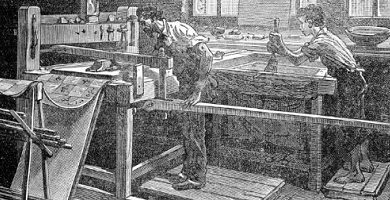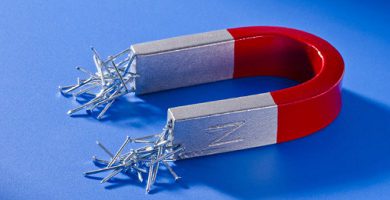What is a battery?
We explain what a battery is and how this device works. In addition, the types of batteries that exist and what is a battery.
-
What is a battery?
An electric battery , also called an electric battery or accumulator, is an artifact composed of electrochemical cells capable of converting chemical energy inside it into electrical energy , through the accumulation of alternating current . In this way, they serve to power different electrical circuits, depending on their size and power.
Batteries are fully incorporated into our daily lives since its invention in the nineteenth century and its mass marketing in the twentieth century, by the hand of electronics. Remote controls, motor vehicles, watches, computers of all kinds, cell phones and a huge number of contemporary devices use batteries as a method of power, so they are manufactured in various powers and proportions.
The batteries have a charging capacity determined by the nature of their composition , and that is measured in ampere-hours (Ah), which means that the battery can give an ampere of current over a continuous hour of life. The greater its load capacity, the more current it can store inside.
Finally, the short life cycle of most commercial batteries has made them a potent contaminant of water and soil , since once they have completed their life cycle they cannot be recharged or reused, and they are discarded. After oxidizing its metal cover, the batteries pour their chemical content into the environment and alter their composition and pH .
-
How does a battery work?

The fundamental principle of a battery consists of the oxidation-reduction ( redox ) reactions of certain chemical substances, one of which loses electrons (oxidizes) while the other gains (reduces), being able to return to its initial configuration given the conditions necessary: the injection of electricity (charge) or the closing of the circuit (discharge).
The batteries contain chemical cells that have a positive pole (cathode) and a negative pole (anode) , as well as electrolytes that allow the electrical flow to the outside. These cells convert chemical energy into electricity, through an irreversible process (practically) that once consumed, depletes its ability to receive energy . In that two types of cells are distinguished:
- Primary . Those that, once the reaction has occurred, cannot return to their original state, thus depleting their ability to store electrical current.
- Secondary . Those that can receive an injection of electrical energy to restore their original chemical composition, thus being able to be used numerous times before being completely depleted.
-
Battery types

There are many types of batteries, according to the elements used in its manufacture, such as:
- Alkaline batteries . Commonly disposable, they use potassium hydroxide as an electrolyte, along with zinc and magnesium dioxide to elicit the chemical reaction that produces energy. They are extremely stable, but short lived.
- Acid-lead batteries . Common in vehicles and motorcycles, they are rechargeable batteries that have two lead electrodes. During charging, the lead sulfate inside is reduced and metal lead becomes the anode, while lead oxide is formed in the cathode. The process is reversed during download.
- Nickel batteries . Very low cost but poor performance, are some of the first to be manufactured in history. In turn, they gave rise to new batteries such as:
- Nickel-iron (NI-FE) . Easy and economical to manufacture, they consisted of thin tubes rolled by sheets of nickel-plated steel. Inside the tubes, nickel hydroxide was used and as caustic potash and distilled water electrolyte. However, its yield did not exceed 65%.
- Nickel Cadmium (NI-CD) . With cadmium anode and nickel hydroxide cathode, and potassium hydroxide as electrolyte, these accumulators are perfectly rechargeable, but have low energy density (barely 50Wh / kg).
- Nickel- hydride (Ni-MH) . They use nickel hydroxide for the anode and a metal hydride alloy as a cathode, they were the pioneers in being used for electric vehicles, since they are perfectly rechargeable.
- Lithium-ion batteries (Li-ION) . The most used batteries in small electronics, such as cell phones and other portable devices. They stand out for their enormous energy density, added to their lightness, small size and good performance, but they have a maximum life of three years. In addition, when overheating they can explode, since their elements are flammable.
- Lithium polymer (LiPo) batteries . Variation of ordinary lithium batteries , have better energy density and better discharge rate, but have the disadvantage of being rendered useless if they lose their charge below 3 volts.
-
Battery and battery

The terms battery and battery in this context are synonyms , and come from the initial times of the human manipulation of electricity . The first accumulators consisted of groupings of metal cells or discs to increase the current supplied initially, and which could be arranged in two ways: one on the other, forming a battery , or one next to the other, on battery .
It should be clarified, however, that in many Spanish-speaking countries only the term battery is used , preferring accumulator for other electrical devices, such as capacitors, etc.




